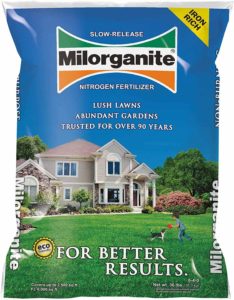If you have a lawn, you must take care of it to keep it looking lush and healthy. And while many products on the market can support your grass’ health, never overdo it with fertilizers. Be careful not to use too much milorganite.
Even when picking organic products, which shouldn’t contain harmful chemicals, you must pay attention to the dosage. Indeed, it is possible to damage your lawn and apply too many nutrients with products such as Milogranite.
But how much Milogranite is too much? And what can you expect after applying it in too high a dosage (or too frequent)? We collected all the information you must have on hand to find answers to these questions, so keep reading if you are curious to explore this subject!
How Much Milogranite Is Too Much?
Using Milogranite without following the instructions on the product label can cause several issues to your grass. You should avoid using it every month. After all, this fertilizer is a slow-release product, meaning it can take up to 10 weeks to release the nutrients into the soil.
Usually, you shouldn’t apply Milogranite more than four times per year. Your objective should be to provide your lawn with all the nutrients it needs to thrive without burning your grass or weakening its roots.
The treatment depends on the type of grass you are growing. For instance, with cool-season grasses, you should apply Milogranite in early to late May (after dormancy), following in July, September, and November (before the first heavy frost).
You can start early with warm-season grasses: April is usually the best period to apply Milogranite. The fourth (and last application) should be in October.
You should never exceed the dosage stated on the product bag. Indeed, more product doesn’t mean faster or better results. Instead, it might cause your lawn plenty of issues (more on this in the following sections). For better results, use a spreader to treat your grass with Milogranite: it will ensure even distribution!
What Happens When You Overuse Milogranite?
Using too much milorganite on your lawn can result in weaker roots and shallow growth. Because you’ll soak the soil with nutrients, your grass won’t put effort into “looking” for what it needs. So, your turf will have problems surviving drought, excessive heat, cold, diseases, and attacks from pests.
Additionally, too many nutrients can make your grass blades grow excessively, which might make your turf brown or yellow. Not many people think about this, but too much fertilizer can harm the surrounding environment. After all, the excess nutrients are washed away by water, polluting the surrounding area.
The absence of salt in Milogranit means this product won’t burn your lawn. But that’s not good news since it can cause other issues, as described above.
What Can You Do When You’ve Over Fertilized?
If you realize you applied too much milorganite on your lawn, don’t despair: you can scoop it out from the ground using a rake or a stiff broom. But if you don’t notice you overused it, the problem might be more challenging to solve. Indeed, you might harm your grass in the long term, meaning you’ll have to reseed your grass.
Of course, the measures you should take depend on the situation. For instance, if you applied Milogranite every month for a season, you might have affected the soil quality. To revert your lawn to its natural conditions, you will have to spend effort, time, and money on revitalizing it. For instance, it won’t be uncommon to see undergrown patches. Sow new seeds in the areas that require it to promote healthier growth.
Additionally, don’t forget to keep your lawn moist (without overdoing it) and mow it regularly. Doing so will help it recover faster. Indeed, make everything you can to ensure your turf is healthy, which means you’ll have to increase the time you spend in the garden.
Usually, with proper care, your lawn will recover in a couple of weeks. If the roots are dead, you’ll have to reseed your turf, which might take longer.
And if you can, avoid applying too much milorganite. Despite being an organic product (hence, free of synthetic elements), that doesn’t mean you can use it monthly! Always follow the instructions on the label and avoid increasing the dosage.
Related Article: Milorganite Deer Repellent

